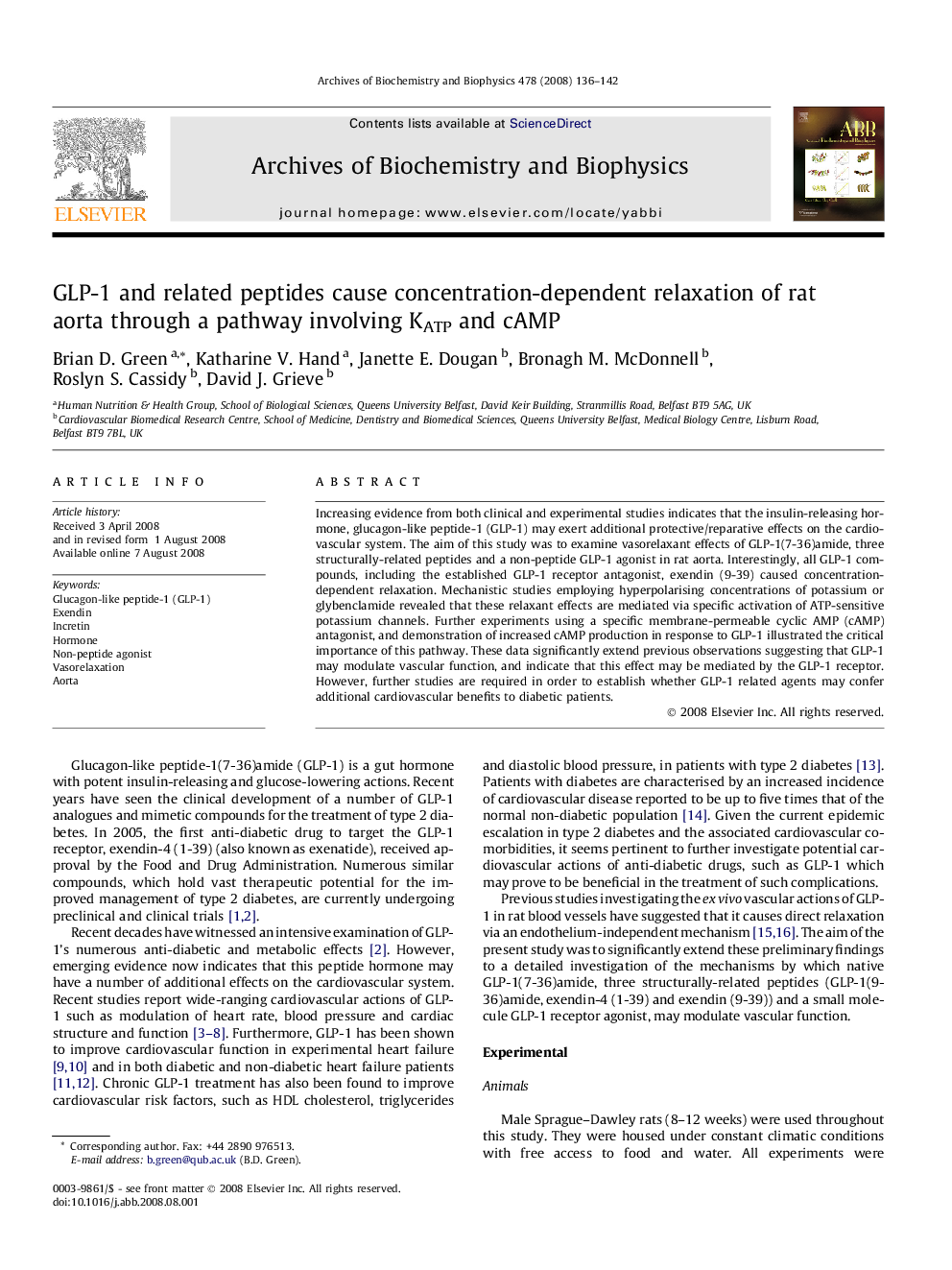| کد مقاله | کد نشریه | سال انتشار | مقاله انگلیسی | نسخه تمام متن |
|---|---|---|---|---|
| 1926563 | 1536469 | 2008 | 7 صفحه PDF | دانلود رایگان |

Increasing evidence from both clinical and experimental studies indicates that the insulin-releasing hormone, glucagon-like peptide-1 (GLP-1) may exert additional protective/reparative effects on the cardiovascular system. The aim of this study was to examine vasorelaxant effects of GLP-1(7-36)amide, three structurally-related peptides and a non-peptide GLP-1 agonist in rat aorta. Interestingly, all GLP-1 compounds, including the established GLP-1 receptor antagonist, exendin (9-39) caused concentration-dependent relaxation. Mechanistic studies employing hyperpolarising concentrations of potassium or glybenclamide revealed that these relaxant effects are mediated via specific activation of ATP-sensitive potassium channels. Further experiments using a specific membrane-permeable cyclic AMP (cAMP) antagonist, and demonstration of increased cAMP production in response to GLP-1 illustrated the critical importance of this pathway. These data significantly extend previous observations suggesting that GLP-1 may modulate vascular function, and indicate that this effect may be mediated by the GLP-1 receptor. However, further studies are required in order to establish whether GLP-1 related agents may confer additional cardiovascular benefits to diabetic patients.
Journal: Archives of Biochemistry and Biophysics - Volume 478, Issue 2, 15 October 2008, Pages 136–142